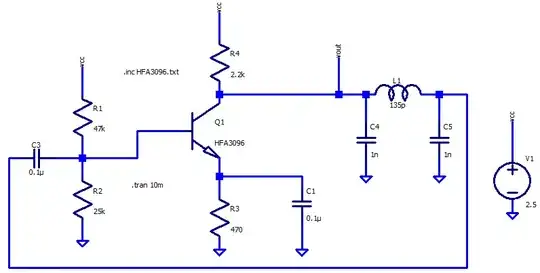I encountered a problem where once the component gets small enough (I
want a frequency in the hundreds of MHz range), the oscillation stops.
I would like a frequency in 433 MHz.
As frequency rises, the effect of the miller capacitor (a parasite inside every transistor between collector and base) becomes greater. This means that some topologies of Colpitts oscillators become harder to make work at higher frequencies. Yours is one of those.
Your circuit relies upon transistor gain and therefore the collector voltage is oscillating and this provides local negative feedback to the base and eventually, it prevents the circuit acting as an oscillator.
You should use the common collector type Colpitts oscillator as they don't rely on transistor voltage gain because the collector is held at a steady DC voltage. Meaning, there can be no negative feedback to the base via the miller capacitor: -

Image from my answer on a previous question about Colpitts oscillators
Here is an analysis of the common-collector Colpitts oscillator running open-loop

